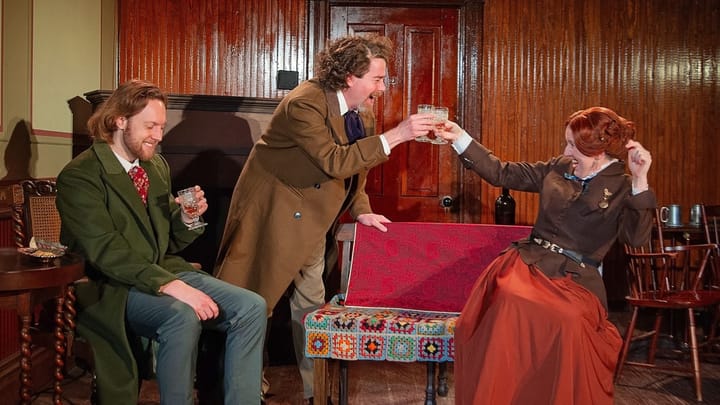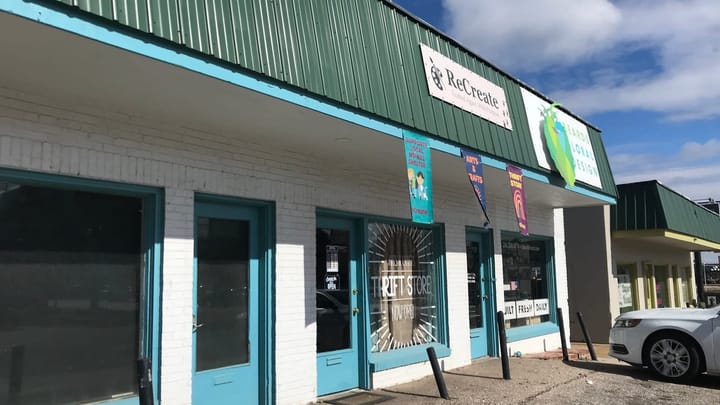Liberated creativity: 'Wichita National All Craft Media Exhibition' at Mark Arts
Artists from around the U.S. demonstrate the range and potential of craft in a juried show on view through December 13.
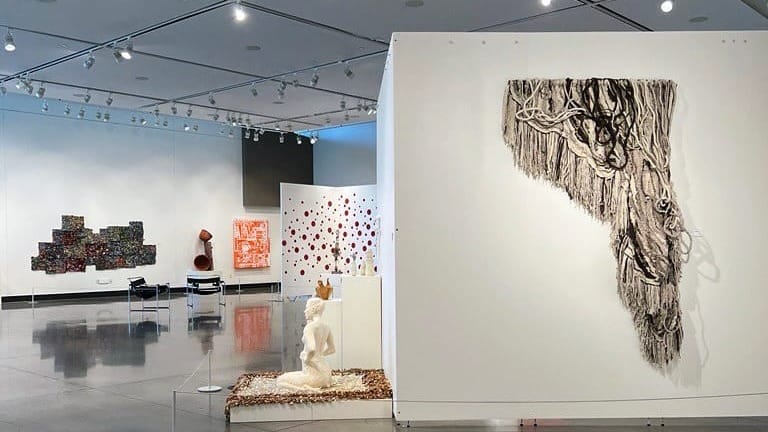
A congregation of craft media in a traditional art institution holds unique powers — or so I believe. There is something cathartic and empowering about seeing tapestry, ceramics, glass, knitting, and felt treated with museum-worthy esteem.
It is liberating.
On view through December 13 at Mark Arts, 1307 N. Rock Road, the “Wichita National All Craft Media Exhibition” is a profuse assemblage of creativity and reflection in their rawest, most liberated forms. The artists use down-to-earth approaches (some quite literally of the earth) to capture moments of ease, peace, hopefulness, admiration, hesitance, speculation, and intention. They also employ a wide array of media, ranging from ceramics, textiles, metal-smithing, glass blowing, printmaking, paper crafts, and illustration to a juxtaposition of the aforementioned.
The exhibition was juried by Catherine Futter, a curator specializing in American and European decorative arts and design and current curatorial chair and senior curator of decorative arts and design at the Brooklyn Museum. Overall, the artists Futter chose for the show frequently return to the unique properties of their chosen medium. Many pieces clearly invoke correlating physical reactions through the materials: the softness of yarns, the clarity of glass marbles, the multilayered richness of collages, and the neatness of laser-cut wood and digital embroidery.
However, calling craft “decorative” can often diminish the seriousness behind the works artists create, especially in an era when galleries, institutions,and critics argue against the stereotypical binary that separates craft and art. The question implied behind every category of “craft” or “craft media” is unfairly simple: How does a tapestry carry value beyond the skill that went into the making of the piece How can a pot, a plate, or a necklace move the world as effectively as a painting, a marble sculpture, or a drawing? How does craft earn its space in a gallery or a museum instead of the display case in a shop or a street booth? What are the criteria, if there are any, that elevate “craft” to the same level as what the mainstream considers to be “art?”
For one, craft represents liberation.
In contrast to traditional fine art practices that often demand professional studio spaces, expensive art supplies, and near-excessive hours out of the artist, craft is far more tolerant and thus, flexible. Reclaimed, upcycled, and accessible materials are common in the craft world. Many artists work in makeshift “studios” out of their homes, whereas others may create on the go.
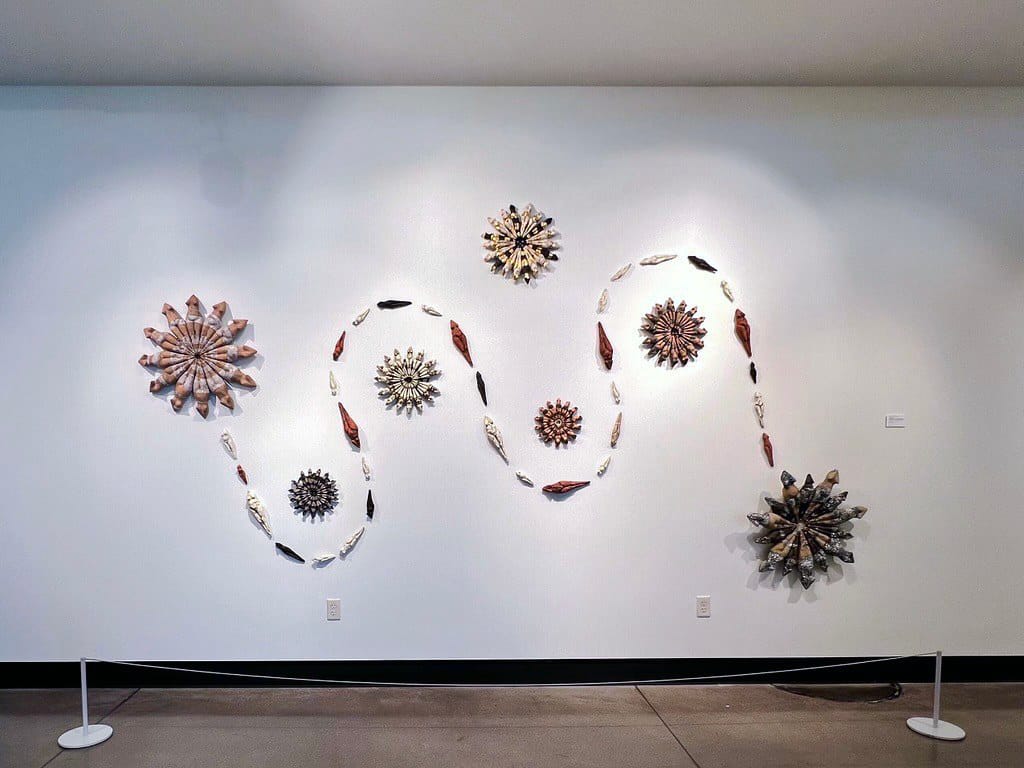
The first-place winner of the “All Craft Media Exhibition,” titled “Spiraling Towards Existence” by Kelly Chapin-Hagen, consists of a set of stoneware elements with earthenware oxide washes, underglazes, and gold luster. The work is shaped like spiraling shells and is laid out on the wall along a dashed line that zig-zags from point A to point B. Chapin-Hagen created these sculptures in her kitchen. I picture how she must have worked: dishes may have been soaking in soapy water while she molded the sculptures, or her art supplies may share drawer space with a tray of silverware. Did she take a break by making a snack or brewing some tea? These imagined scenes carry the same motion embedded in the spirals and the stoneware installation, summoning the artist’s presence and energy in front of the audience.
Nothing is really off-limits in the world of experimental craft.
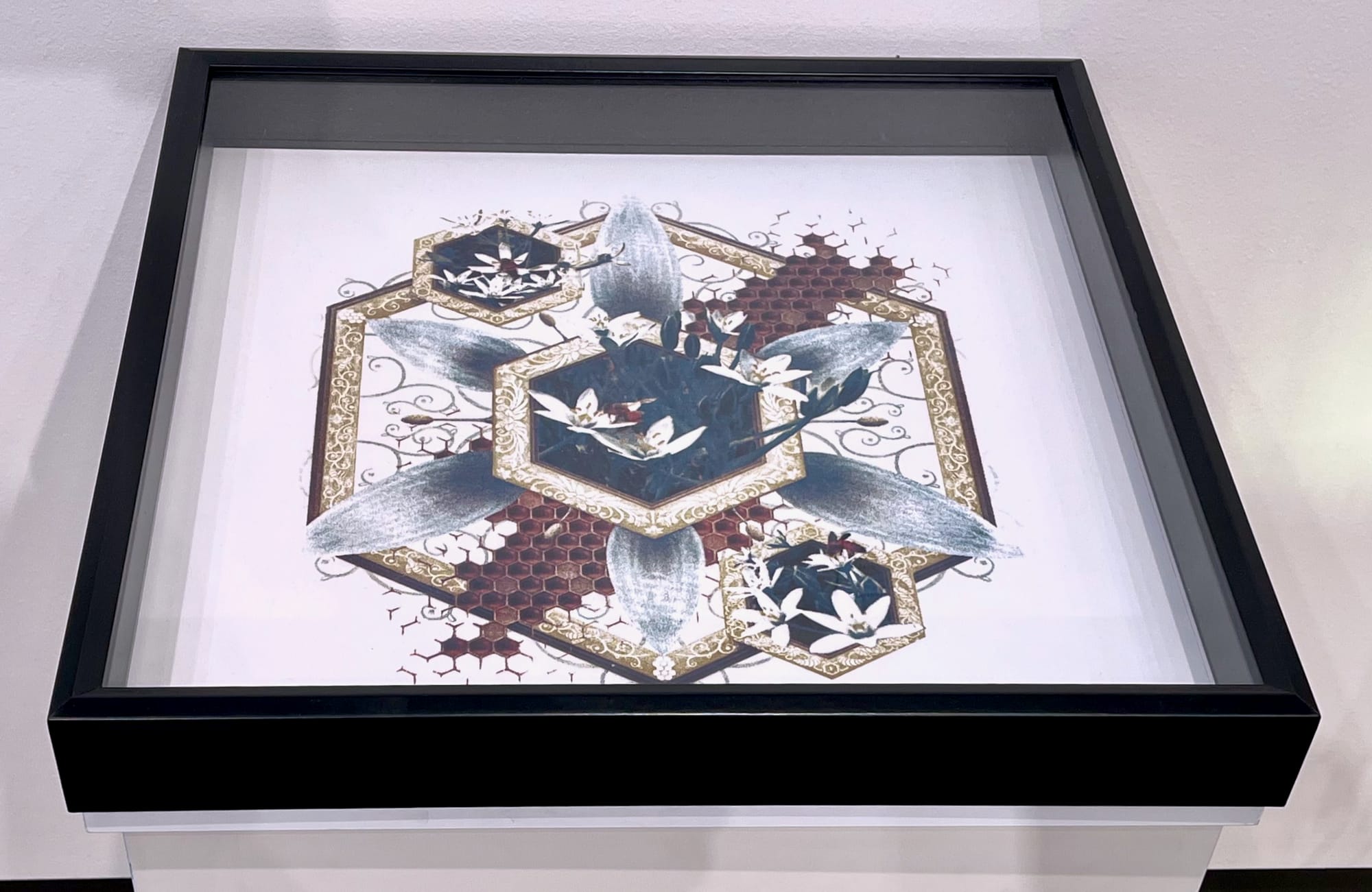
“System,” a geometric silkscreen print by Anthony Corraro, embodies the core crafting principle of utilizing whatever is available. Corraro created the entire piece with dyed earth — in other words, dust and dirt. The artist pulled the print onsite at the gallery, as there would be no other way of building the artwork elsewhere without disturbing the soil during transit. What is presented as an impeccable geometric design is actually a demonstration of the artist’s confidence and comfort in working with an extremely unstable medium. While dust can be susceptible to external disruption, it is also a representation of utter freedom and letting go: the artist must trust the process, for there is no negotiation or modification once it is done.
Some of the artists also embraced craft’s personal and intimate nature in their creations.

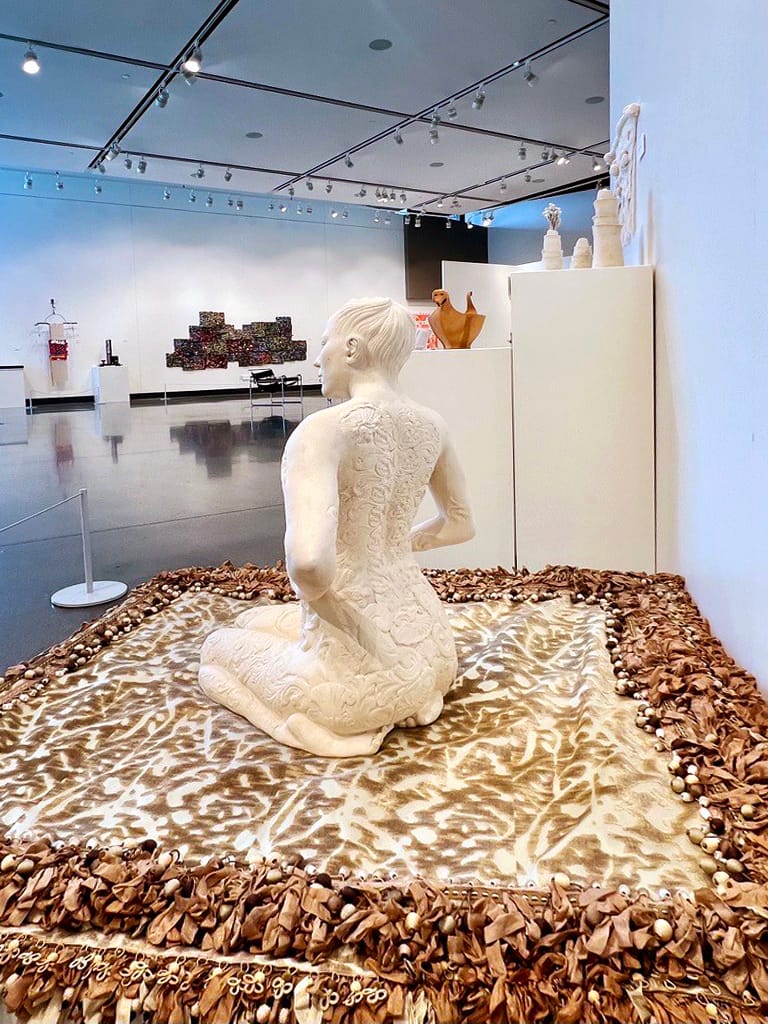
Linda Ganstrom, “Ornament,” Ceramic and fabric, 32 by 52 by 60 inches. Photo courtesy of Mark Arts.
In “Ornament,” Linda Ganstrom created a ceramic sculpture of herself kneeling on a soft carpet, hands gently feeling the canyons and valleys of her own body. The texture of the figure’s skin imitates a natural landscape. Upon closer look, we see waves, feathers, seashells, ferns, and subtle lace patterns covering the woman’s front and back. The figure is of humble nature, silently exploring herself as if to recount the chapters of her life through the marks on her body.
The carpet, soft and fuzzy, becomes the kind, secure, and compassionate ground where self-awareness envelopes the body from the soul. Ganstrom’s practice celebrates all aspects of the woman: her accomplishments, beauty, and potential throughout different stages of her life. Here, we see a woman feeling the marks for herself. She closes her eyes and appears absorbed in thought. One wonders: what story does each carved line hold?
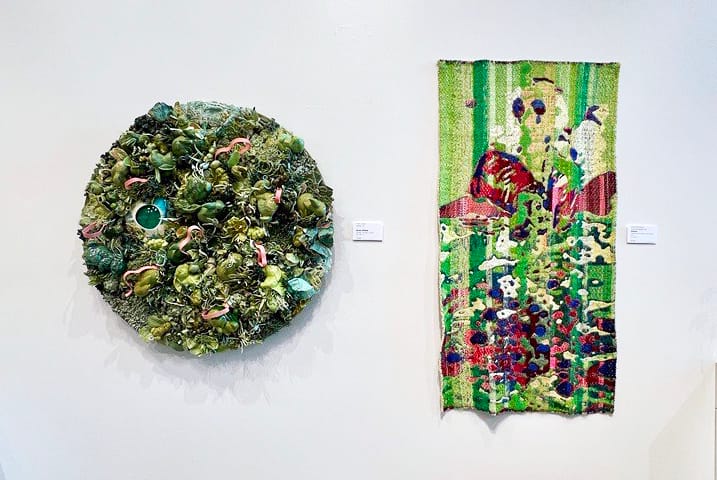
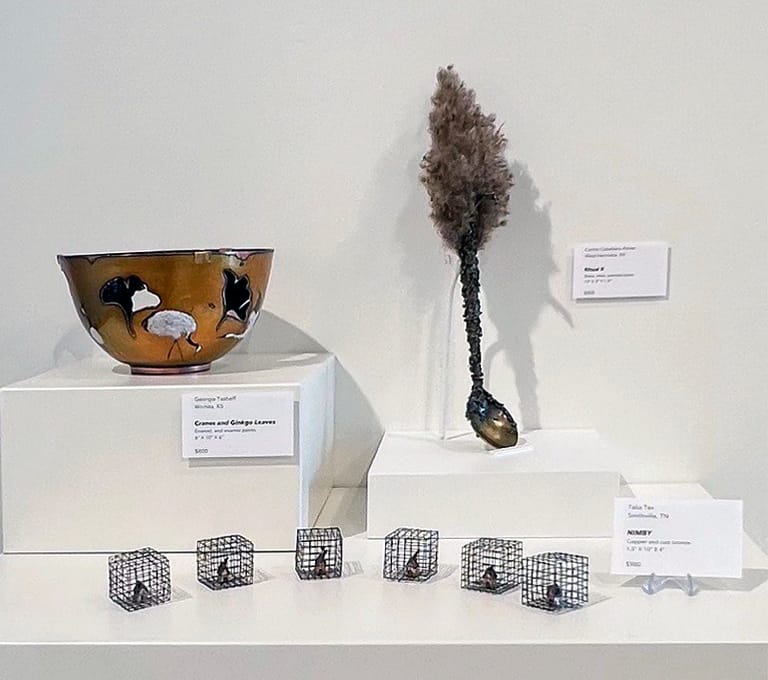
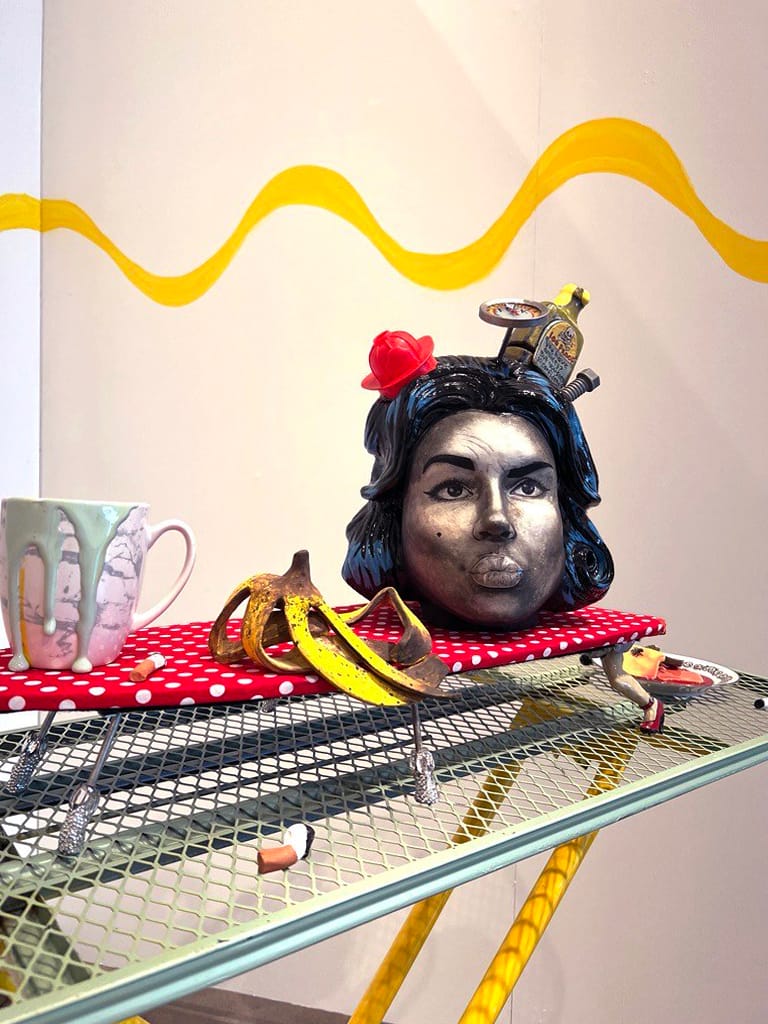
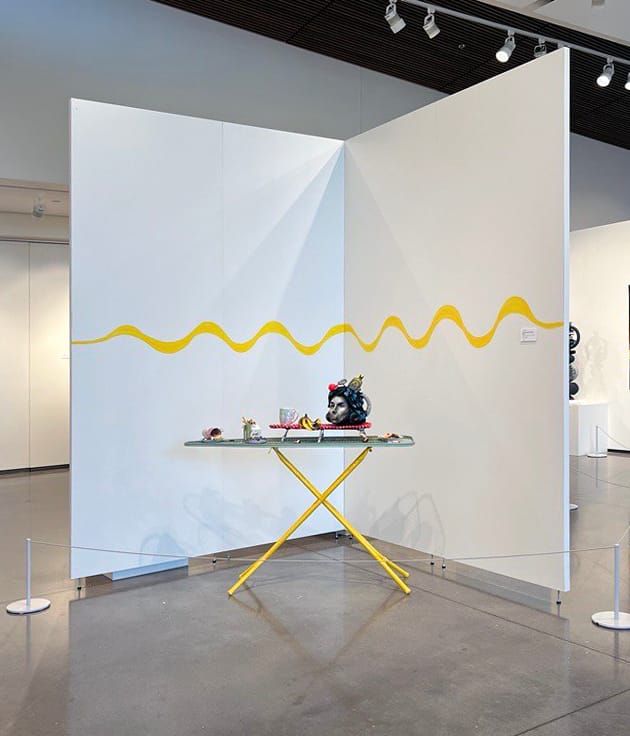
Anna Wagner, “Anxious Drinking (Teapot Head),” Stoneware, found objects, underglaze, glaze, resin, paint, 51.5 by 54 by 15 inches. Photo courtesy of Mark Arts.
Meanwhile, “Anxious Drinking (Teapot Head)” by Arizona-based Anna Wagner shows the more chaotic side of a feminine private life. Wagner captures the messiness and anxiety through shape and the form of display. Built upon stoneware and found objects, the piece is essentially a puzzle set where each element can be moved and rearranged, with a cigarette butt here, a tipped cup there. The “teapot head” likely refers to the common imagery of steam coming out of one’s ears or temples to depict someone “fuming,” “boiling over,” or “about to lose it.” The ironing board supporting the entire assemblage is a witty reference to domestic chores — activities that women are often involuntarily confined to and burdened by.
Like any other art form, craft is also, by nature, political.

In “A Culture Nearly Destroyed,” Mulvane, Kansas-based textile artist Stephanie Bayliff presents a woven tapestry using warm-tone fibers made with wool, cotton, and acrylic. Bayliff wraps the fiber work around a large tree branch and it cascades downward, a red-to-orange gradient of woven cloth with Indigenous patterns embedded in horizontal rows, along with feather and tree bark embellishments.
One could easily mistake the hues as a romantic sunset, yet a quick glance at the title reveals that the palette is symbolic of the cruelty behind the Trail of Tears — the forced relocation of Eastern Woodlands Indigenous tribes during the 1830s, which caused an estimated 10,000 to 16,000 deaths. Once the historic context settles in, the red, orange, and gold no longer exude warmth. Rather, the viewer visualizes blood-soaked soil, where the atmosphere is tainted with an ominous red that extends and blends into the horizon.
Our free email newsletter is like having a friend who always knows what's happening
Get the scoop on Wichita’s arts & culture scene: events, news, artist opportunities, and more. Free, weekly & worth your while.
No spam. Unsubscribe anytime.
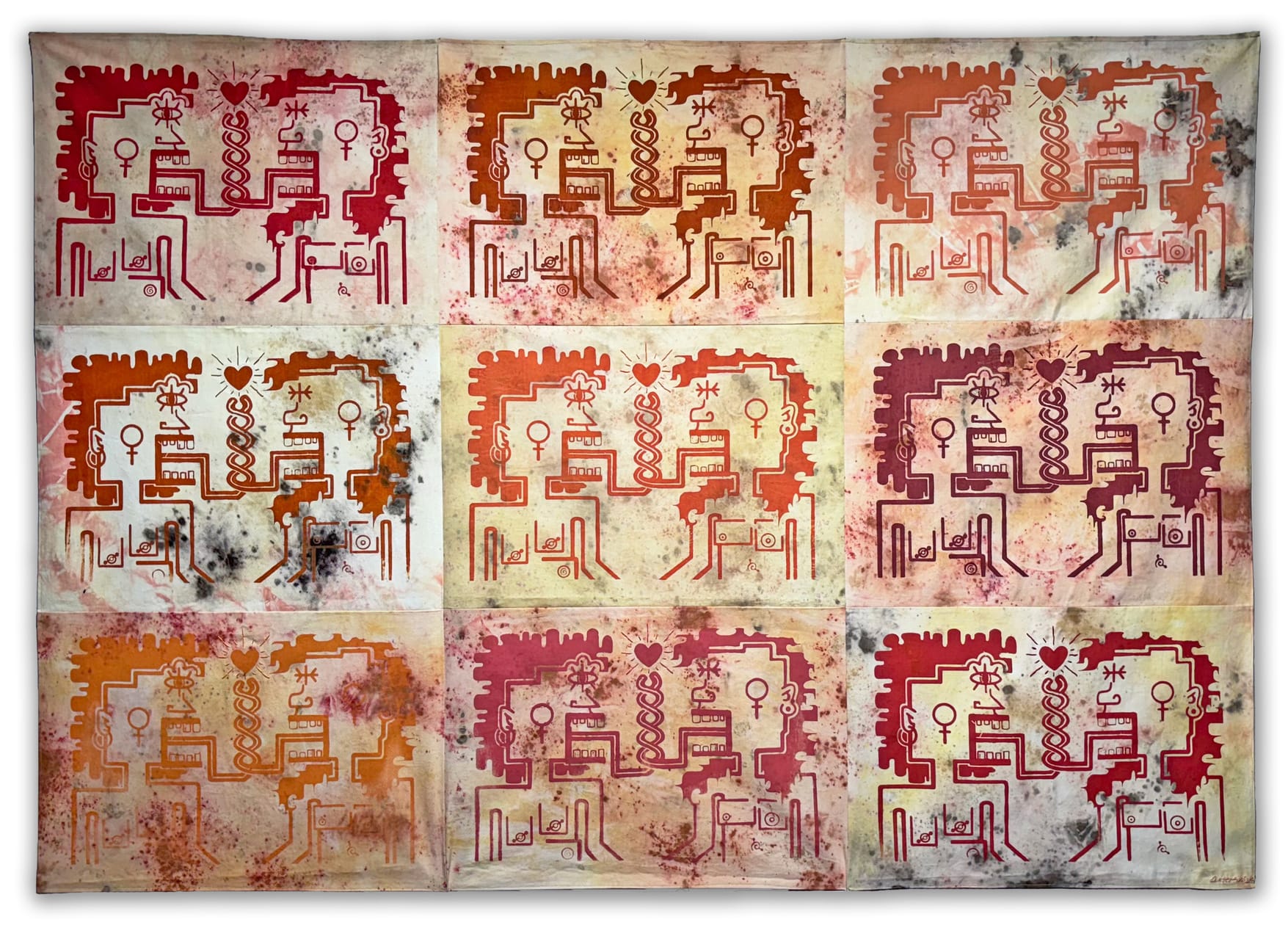
Equally painful and uncomfortable is a mixed-media textile work by Claire Havenhill of Fort Collins, Colorado. Titled “Always Keep One Eye Open,” for this work, the artist screenprinted a totem depicting a queer couple French kissing onto natural dye-tinted cotton fabric. The prints are laid out in a 3-by-3 grid and feature embroidered accents. Showing only their profiles and one alert eye for each figure, the artist shines a light on the hyper-vigilance experienced by members of the LGBTQ+ community, particularly those living in a hostile system that resents them for merely existing and loving. While the artist was reflecting upon a period in the past with this work, the imagery is simply too relatable today as the United States, especially conservative-dominant states, regress into policies and ideologies driven by biases and bigotry. The title is self-explanatory: You'd better keep one eye open, for you never know how and when you might be struck down.
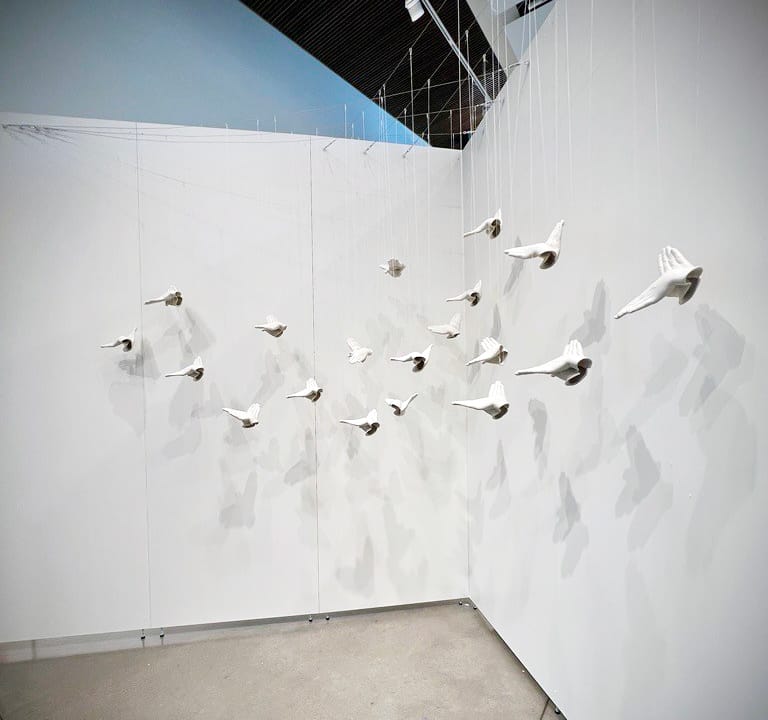
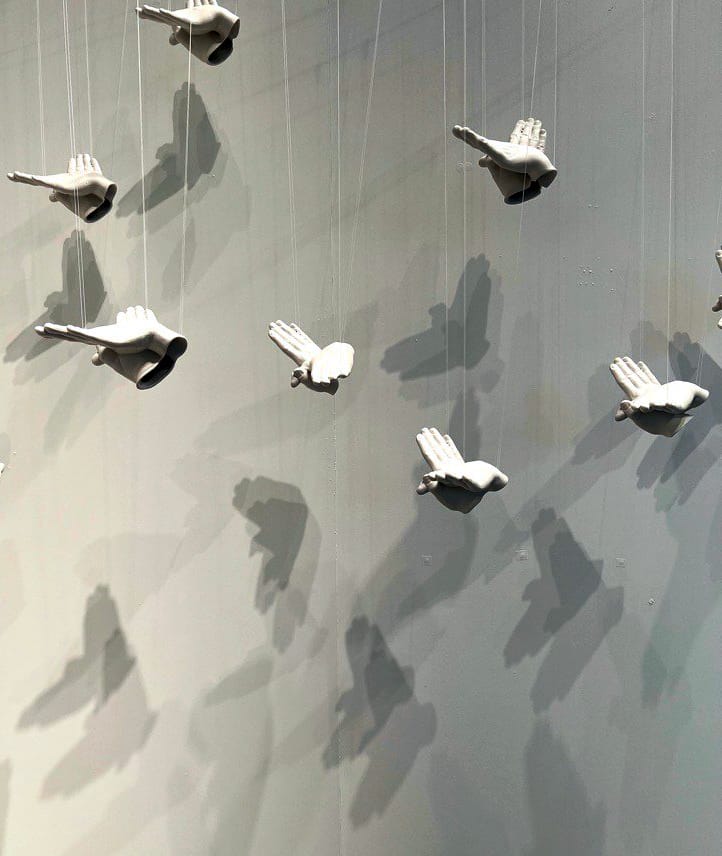
Jennifer Holt, “On a Wing,” Porcelain, thread, 108 x 180 x 72 inches. Photo courtesy of Mark Arts.
Before viewers exit, they will pass by an installation of porcelain hands suspended from threads by Jennifer Holt. “On a Wing” features a flock of hands mimicking birds flying with spread wings. Overhead lighting casts their shapes on the blank walls behind them, forming a ghostly cascade of shadow puppet birds and a most suitable conclusion to the exhibition.
Craft is liberation. It is tender experimentation, and thus, the highest form of sacred creativity where the maker translates their lived experience and cultivated beliefs. Using clay, fiber, metal, glass, paper, and other media, the artists contribute to a showcase of what art can be beyond mainstream definitions.
The “Wichita National All Craft Media Exhibition” does more than impress audiences with outstanding craftsmanship. It is a decentralized experience where marginalized voices echo through marginalized craft practices.
And these days, who couldn’t use more creative freedom?
The Details
“Wichita National All Craft Media Exhibition”
October 9-December 13, 2025, at Mark Arta, 1307 N. Rock Road in Wichita.
The gallery is open to the public from 10 a.m.-5 p.m. Tuesday through Saturday.
Admission is free, and the facility is accessible to people with physical disabilities.
View the works in the exhibition on the Mark Arts website.
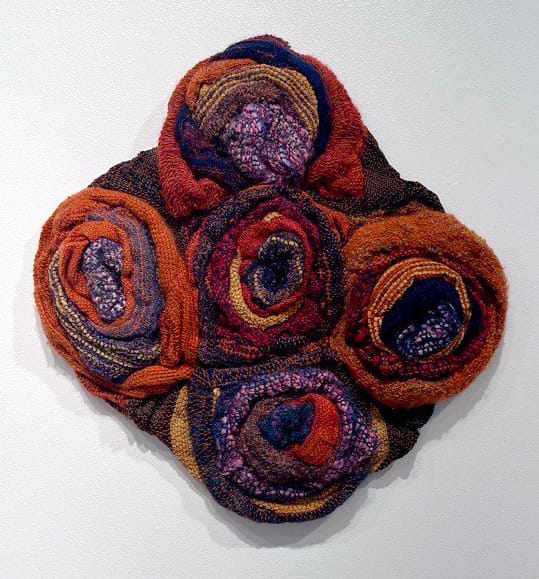
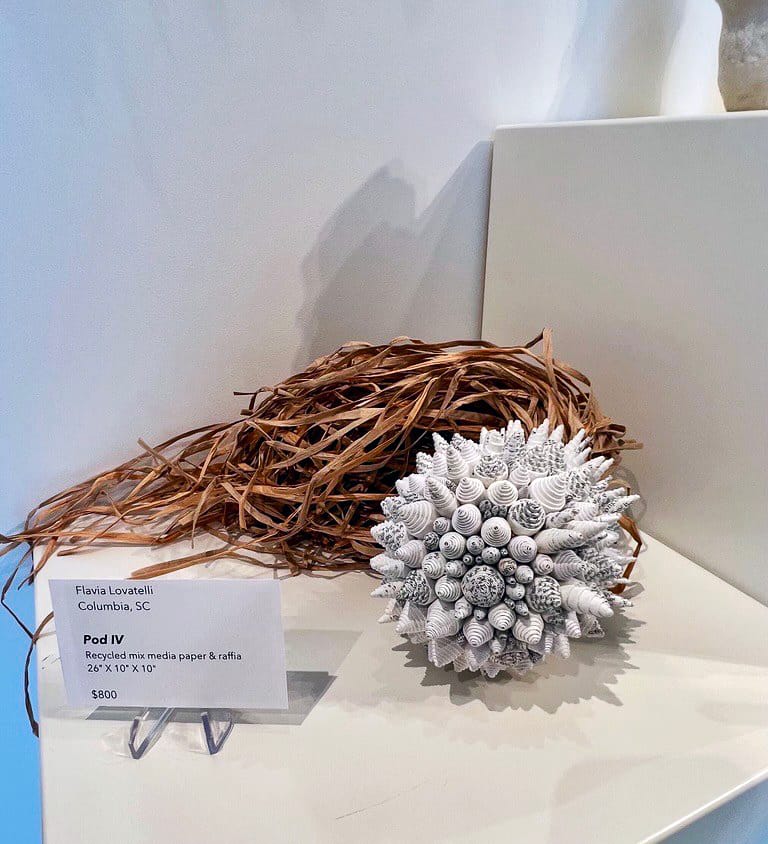
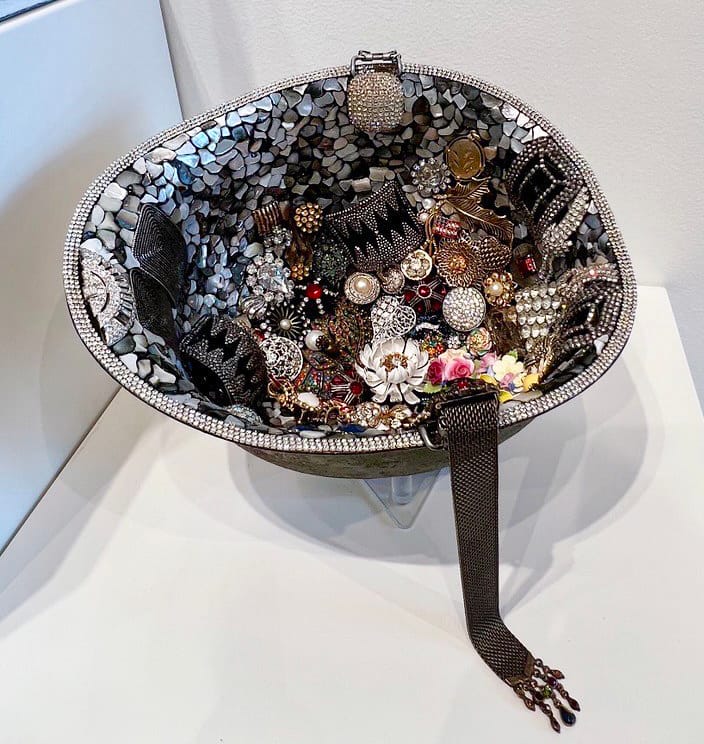
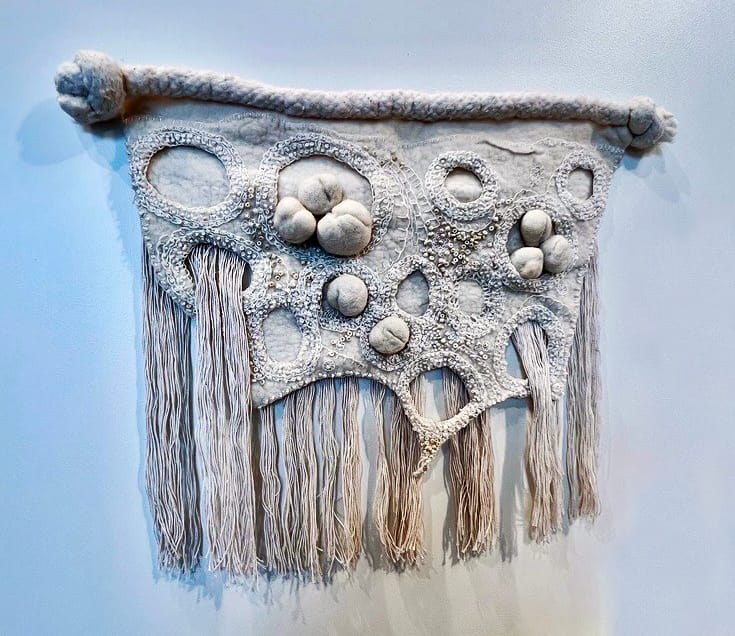
From top left: Valerie Johnson, “Circle of Comfort,” Mixed fibers of wool, mohair, cotton, and jute, 20 by 20 by 4 inches; Flavia Lovatelli, “Pod IV,” Recycled mix media paper and raffia, 26 by 10 by 10 inches; Autumn Sage, “WWII Helmet,” Mosaic assemblage, 9 by 11 by 10.5 inches; Linda Anderle, “Forever Water Falls,” Fiber/textile art, 18 by 25 by 2 inches. Photos courtesy of Mark Arts.

Top: Rachel Delaney, “Seeking to Thrive,” Thread and plexiglass, 21 by 12 by 9 inches. Left: Gina Westergard, “Con le Stelle,” Copper, 24k gold leaf, electroformed button bush seedpod, 2.5 by 2.75 by 2.75 inches. Right: Gina Westergard, “Piccola Zucca”, Copper, electroformed velvetleaf seedpod, 24k gold leaf, 2 by 3.5 by 3.5 inches. Photo courtesy of Mark Arts.
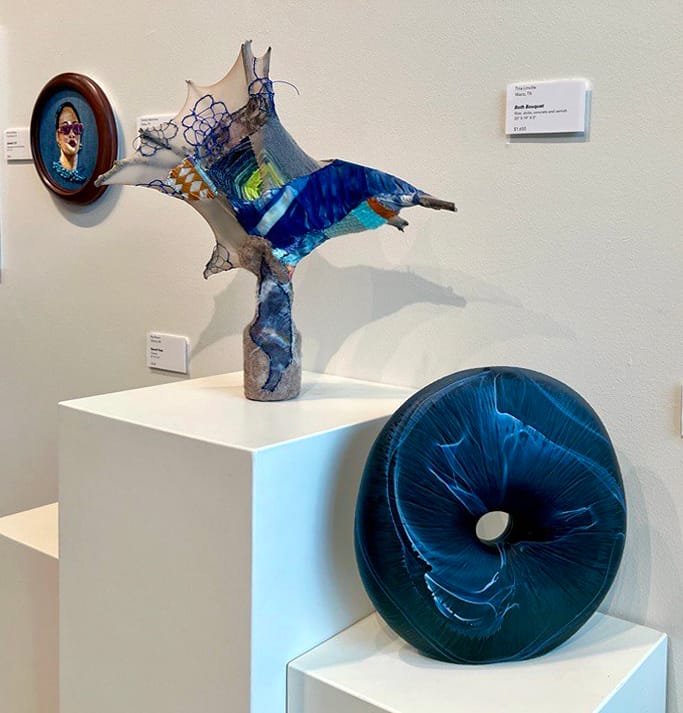
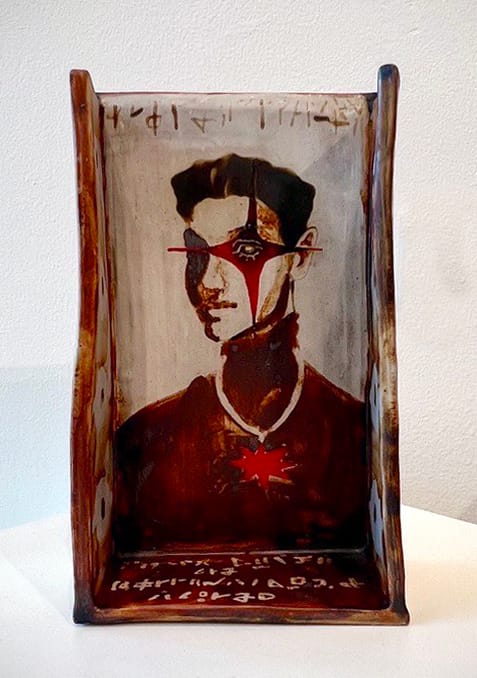
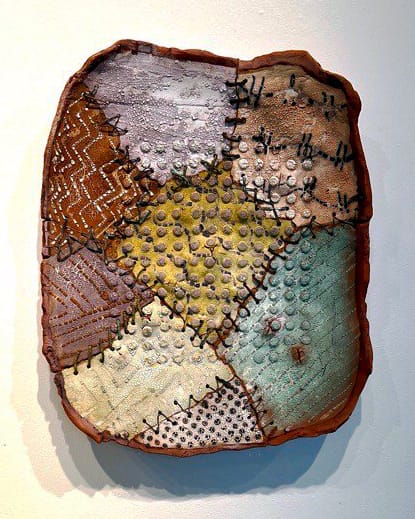
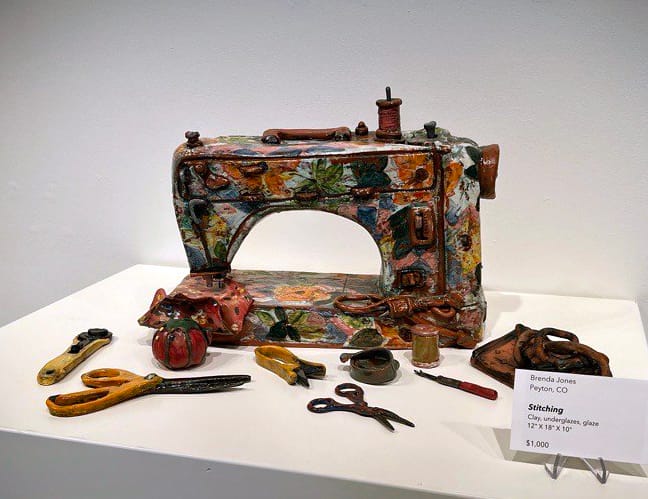

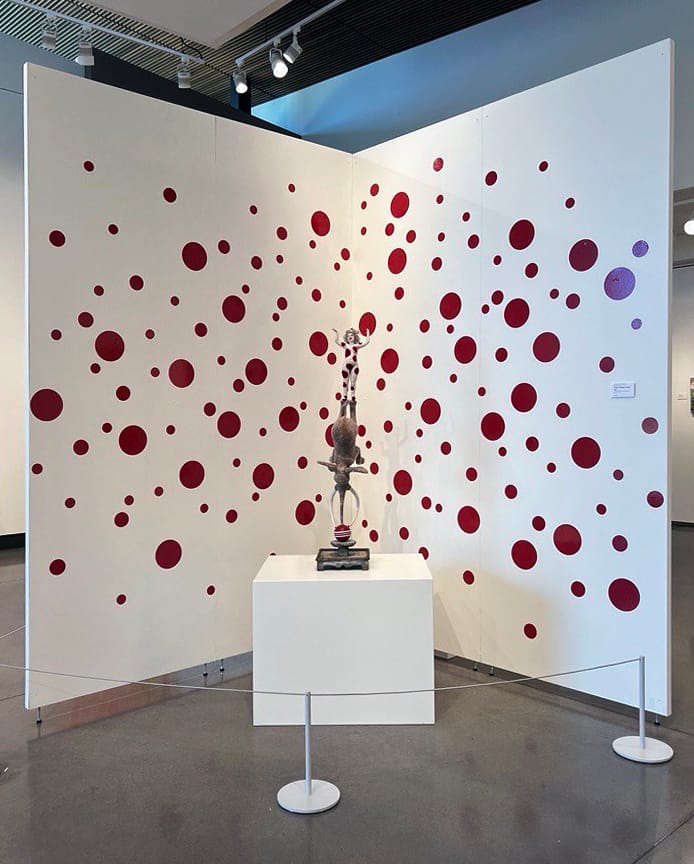

From top left: Hammond Whiting, “Sanctuary (Reliquary),” stoneware, underglaze, oxides, 11.5 by 4.25 by 3.5 inches; David Mai, “Flyover Crazy Quilt Fields,” ceramics and copper, 22 by 18 by 5 inches (Photo courtesy of the artist); Brenda Jones, “Stitching,” clay, underglazes, glaze, 12 by 18 by 10 inches; Benjamin Johnson, “Gravitational Redshift,” glass, blown and diamond engraved, 17.5 by 14.5 xby 3.5 inches; Jennifer Schermerhorn, “If I am Too Much, Go Find Less,” needle-felted wool, mixed media, 36 by 10 by 10 inches; Bruce Chapin, “Enamel Coneflower,” enamel with copper with wood, 17 by 15 by 15 inches. Photos courtesy of Mark Arts.


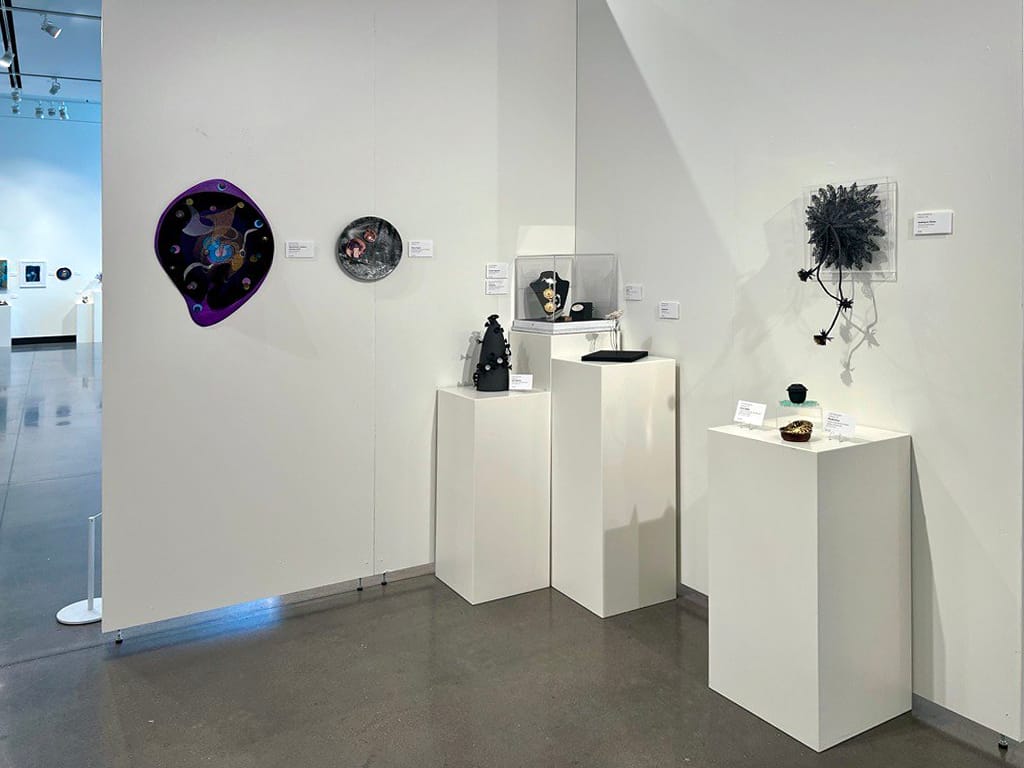

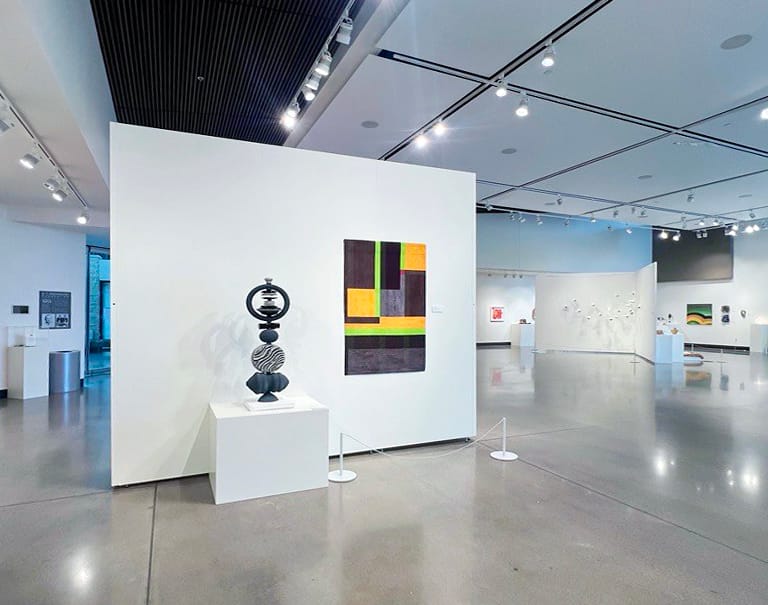
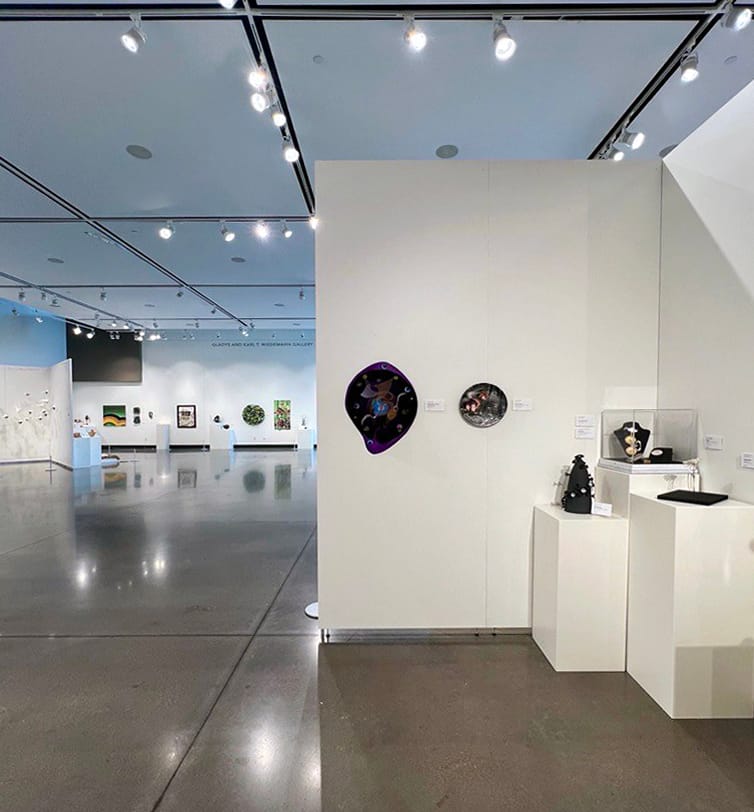
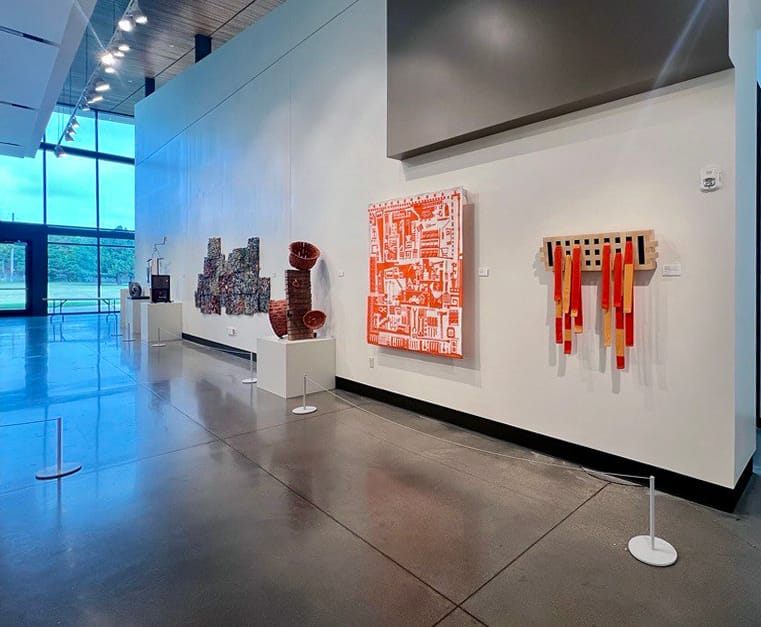

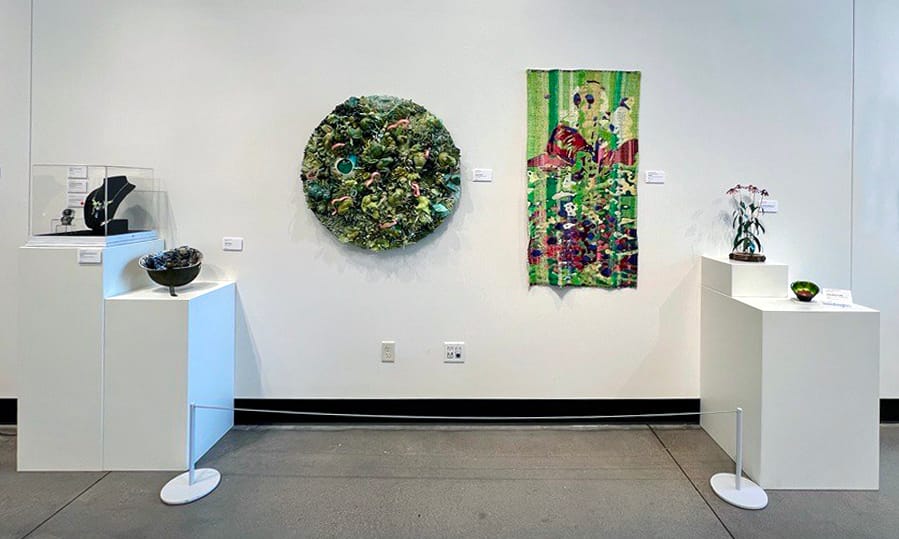
Installation views of “Wichita National All Craft Media Exhibition” at Mark Arts. Photos courtesy of Mark Arts.
Xiao Faria daCunha is a practicing visual artist, curator, art writer, and essayist musing about the living experience as a Chinese diaspora and woman of color in America’s heartland. Her visual art practice is multidisciplinary and ventures among mixed-media illustration on paper, textile, printmaking, and mixed-media collage. Xiao was the former Managing Editor for Urban Matter Chicago and her bylines have appeared in Chicago Reader, BlockClub, BRIDGE.CHICAGO, KCUR, The Pitch KC, and more. She considers all her practices essentially journalism practices to speak on behalf of those who haven't been heard and shed light on what hasn't been seen, whether it's emotional, cultural, or societal.
❋ Derby man has the kind of voice that turns heads — and chairs
❋ Socializing while sober: how some Wichitans are cultivating alcohol-free communities
❋ As a small creative business closes, the owner mourns
❋ Painting through it: Autumn Noire on 20 years of making art
❋ How a guy from Wichita resurrected 'Dawn of the Dead'
❋ Bygone Friends University museum housed curious collections
Support Kansas arts writing
The SHOUT is a Wichita-based independent newsroom focused on artists living and working in Kansas. We're partly supported by the generosity of our readers, and every dollar we receive goes directly into the pocket of a contributing writer, editor, or photographer. Click here to support our work with a tax-deductible donation.

